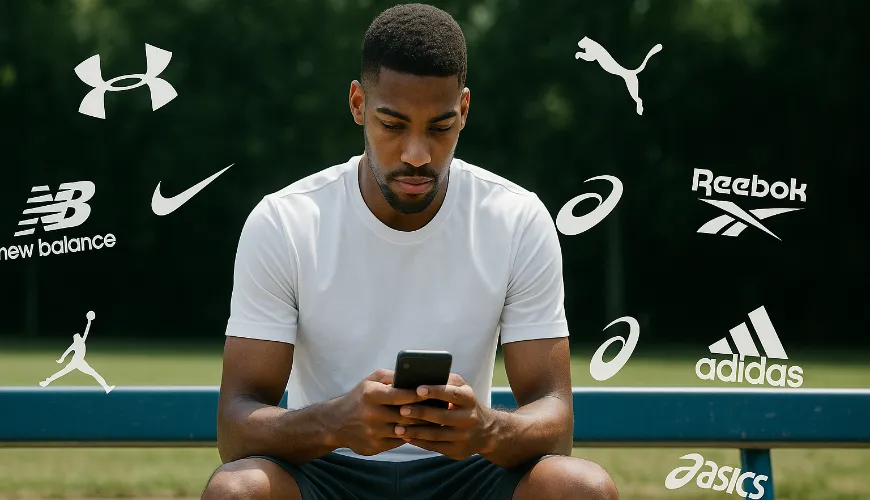How Social Media Turns Athletes into Global Brands

There was a time when greatness was measured in trophies. Now, it’s measured in followers.
In 2025, an athlete’s influence no longer stops at the field, track, or court. It stretches across timelines, hashtags, and reels, where every highlight becomes an advertisement and every post a statement of identity. Social media has transformed sports from performance into presence – a game that never ends when the whistle blows.
The Arena of Attention
The new battlefield is visibility. On Instagram, TikTok, and X, competition is no longer only for medals but for engagement. According to Statista 2025, over 85% of global sports fans follow at least one athlete online, and more than half admit that they “feel closer” to players who share behind-the-scenes content.
That proximity sells. Cristiano Ronaldo earns an estimated $2 million per sponsored post, while rising tennis stars like Coco Gauff and Carlos Alcaraz attract multi-million brand partnerships largely thanks to their digital charisma. The scoreboard is still important, but online personality often defines longevity.
Athletes are now storytellers, entrepreneurs, and sometimes philosophers – all in a single scroll.
From Fan Clubs to Ecosystems
Social media isn’t just exposure; it’s architecture. Every post creates a data loop of reactions, resharing, and emotional feedback. Fans don’t just watch anymore, they participate. This interaction transforms the relationship between athletes and supporters from admiration to collaboration.
Platforms like Twitch or YouTube have become personal studios where athletes control their narrative. Formula 1 drivers stream practice laps; basketball players review their own highlights with fans in live chat. The brand is no longer built by PR teams but by personalities fluent in digital rhythm.
Even simple interactive experiences, such as the plinko game bangla – illustrate how online engagement models work. The idea is the same: the user becomes part of the experience, predicting outcomes, reacting in real time, sharing emotion. That same loop defines how audiences respond to athletes – participation becomes belonging.
The Business Behind the Persona
The most successful athletes have realized that social media isn’t a hobby, it’s infrastructure. They hire teams of strategists, analysts, and digital designers. They monitor engagement patterns, audience geography, even sentiment analysis.
This precision turns presence into profit. When Naomi Osaka launched her media company, she explained that “ownership of image is ownership of story.” It’s a truth every new athlete understands: whoever controls the content controls the value.
And this value has multiplied. According to Business Insider (2025), the average sponsorship ROI for brands collaborating with active athletes on social platforms is 6.4 times higher than traditional advertising. The digital athlete isn’t just a player – they are a brand in motion.
A New Kind of Authenticity
Ironically, what sells best online isn’t perfection but vulnerability. When Marcus Rashford speaks about social causes, or when Simone Biles posts about mental health, engagement skyrockets. Fans crave something real in the ocean of filters.
This emotional transparency builds loyalty stronger than any logo. Brands have followed suit, aligning campaigns not with championships but with values – resilience, equality, inclusion. The athlete becomes a mirror for society’s hopes and contradictions.
The Power of Connection
Today’s sports economy thrives on connection. Mobile platforms such as https://melbetbd.org/app/ represent another form of interactive culture – one where users engage dynamically, analyzing outcomes, following stats, and feeling part of a larger global rhythm of sport. The technology behind such systems emphasizes trust, accessibility, and innovation, mirroring the qualities fans now expect from their favorite athletes.
The power of engagement, whether in sports or gaming, rests on the same foundation: participation. When people feel seen, they invest – emotionally, socially, financially.
The Future: Every Athlete a Media Company
By 2030, every major athlete will be their own media ecosystem. Artificial intelligence will schedule content, holographic meetups will replace autograph sessions, and fans will experience live interactions from any part of the world.
But behind all the algorithms and metrics remains the timeless core of sport – human connection. The jump, the goal, the finish line still matter because they remind us that excellence is not automated. It’s earned.
Social media didn’t change the essence of competition, it amplified it. It gave athletes the stage, the script, and the power to speak directly to the world. And in this new arena, influence isn’t just about who wins the match – it’s about who wins the moment.



